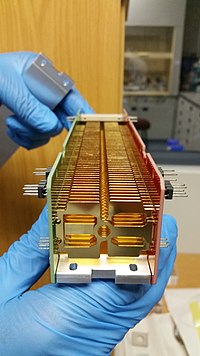Collision-induced dissociation

Imagine you have a toy car and a big block of play dough. If you were to throw the toy car at the play dough, it would collide with the play dough and maybe even break through it. That's kind of what happens in collision-induced dissociation.
In science, there are things called molecules that are made up of atoms. And sometimes scientists want to study these molecules to learn more about them. But molecules can be really hard to study because they are so tiny and hard to see.
So scientists use special machines called mass spectrometers to study molecules. Mass spectrometers shoot tiny particles called ions at the molecules to break them apart. This is where collision-induced dissociation comes in.
When the ions collide with the molecules, the molecules can break apart into smaller pieces. This breaking apart is called dissociation. And it happens because of the collision, just like how the toy car breaks through the play dough because of the collision.
Scientists can then study the smaller pieces of the molecule to learn more about it. And this is really helpful because it can help scientists understand things like how medicines work in our bodies, or how different chemicals can affect our environment.
In science, there are things called molecules that are made up of atoms. And sometimes scientists want to study these molecules to learn more about them. But molecules can be really hard to study because they are so tiny and hard to see.
So scientists use special machines called mass spectrometers to study molecules. Mass spectrometers shoot tiny particles called ions at the molecules to break them apart. This is where collision-induced dissociation comes in.
When the ions collide with the molecules, the molecules can break apart into smaller pieces. This breaking apart is called dissociation. And it happens because of the collision, just like how the toy car breaks through the play dough because of the collision.
Scientists can then study the smaller pieces of the molecule to learn more about it. And this is really helpful because it can help scientists understand things like how medicines work in our bodies, or how different chemicals can affect our environment.
Related topics others have asked about:
